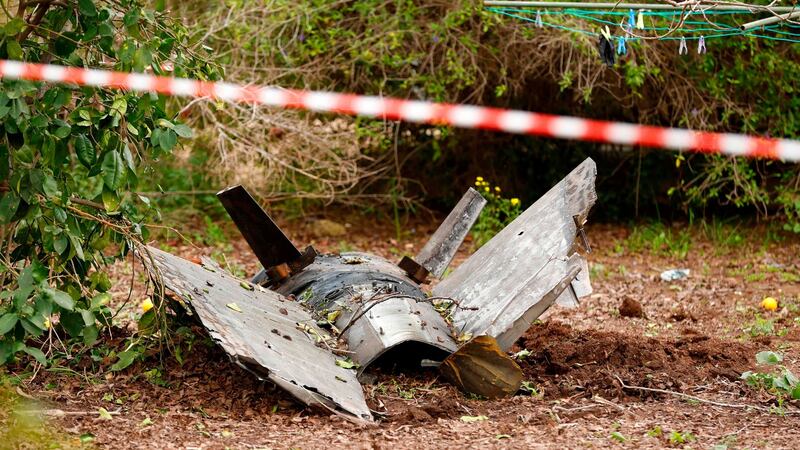Israel launched its most intensive air strikes yet against Iranian forces in Syria on Saturday after intercepting what it said was an Iranian drone and the downing of an Israeli F-16 warplane.
The incidents marked the most serious confrontations in Syria between Israel and Iranian-backed forces that have established a major foothold in the country while fighting in support of President Bashar al-Assad in an almost seven-year-old civil war.
Iran’s expanding clout during the Syrian civil war, including deployments of Iran-backed forces near the Israeli-occupied Golan Heights, has raised alarm in Israel, which has said it would act against any threat from its regional arch-enemy, Tehran.
But both Israel and Syria signalled they were not seeking wider conflict, even as prime minister Benjamin Netanyahu rushed to military headquarters in Tel Aviv for consultations and the pro-Assad alliance pledged a strong response to any Israeli "terrorist action".
Russia’s Foreign Ministry said on Saturday that Moscow, whose forces began intervening on behalf of Assad in 2015, was seriously concerned by the latest developments in Syria. It urged both sides to exercise restraint and avoid escalation.
“My impression is that it seems to be contained at this point,” said a Western diplomat in the region. “I don’t think anybody wants to escalate further.”
The chain of events on Saturday began at 4.30am when an Israeli Apache helicopter shot down an Iranian drone over the northern town of Beit Shean, the Israeli military said.
The drone had been sighted taking off from a base in Syria, and was intercepted after it flew over Israeli territory, said Lt Col Jonathan Conricus, an Israeli military spokesman.
Eight jets
Israeli planes, including at least eight jets, then struck an Iranian installation in Syria which the Israeli military said operated the unmanned aircraft.
One of those planes, a US-made F-16, crashed on its return from that mission, landing in an empty field near Harduf, east of Haifa, in northern Israel.
Both pilots ejected over Israeli territory and were injured, one of them critically. The Israeli military said early assessments showed the jet was hit by Syrian anti-aircraft fire, but could not immediately confirm that.
Air raid sirens sounded in the early morning of the Jewish sabbath in northern Israel and flights at Tel Aviv’s international airport were briefly halted. The frontier fell quiet by mid-afternoon.

Iran rejected the Israeli version of events as "ridiculous". The pro-Assad military alliance denied that any of its drones entered Israeli air space.
David Ivry, a former Israeli Air Force chief, told Reuters he believed it was the first time an Israeli F-16 had been brought down since Israel began using the jets in the 1980s.
Air superiority
Israel, which also operates drones, has long maintained air superiority in the region. It mounts air strikes in Syria on a regular basis, striking suspected weapons shipments to Hizbullah, the Iranian-backed militant group.
Iranian and Iran-backed Shia forces, including Hizbullah, have deployed widely in Syria in support of Assad. Iran’s military chief warned Israel last October against breaching Syrian airspace and territory.
The tough part is how to continue to walk a tightrope, where neither side wants an all-out war, but no one wants to be the one who absorbed the blow and didn't respond appropriately
Mr Netanyahu, visiting the Golan on Tuesday, peered across the border into Syria and in public remarks warned Israel’s enemies not to test its resolve.
But on Saturday, after the downing of the F-16, an official in the pro-Assad alliance said a “message” had been delivered to Israel. He added: “I do not believe matters will develop to a regional war.”
An Israeli military spokesman said Israel did not seek escalation in the region, calling its action a defensive effort triggered by an Iranian act of aggression.
"The tough part is how to continue to walk a tightrope, where neither side wants an all-out war, but no one wants to be the one who absorbed the blow and didn't respond appropriately," Uzi Rabi, director of the Moshe Dayan Center for Middle Eastern and African Studies at Tel Aviv University, said on Israel's Channel 11 television.
In Washington, President Donald Trump's administration has backed Israel's hawkish stance on Iran, and declared the containing of Tehran's influence an objective of its Syria policy. On a visit to Israel last month, US vice-president Mike Pence called Iran the world's "leading state sponsor of terror".
US secretary of state Rex Tillerson is also expected to visit the region in the coming week to discuss the crisis in Syria and other issues, and is scheduled to visit Jordan, Turkey, Lebanon and other countries.
Hizbullah and Israel last fought a major conflict in 2006.
Tensions have also spiked across the frontier between Israel and Lebanon over Israeli plans for a border wall, and Lebanese plans to exploit an offshore energy block which is partly located in disputed waters.
In Gaza, the armed wing of Islamic group Hamas declared a full alert among its fighters because of the escalation of violence in northern Israel.
Israel captured the Golan Heights from Syria in the 1967 war and has occupied it ever since, annexing the territory in 1981 in a move not recognised by the international community.
Uneasy standoff
There has been an uneasy standoff since a ceasefire deal that followed another war in 1973, with United Nations observer forces manning a buffer zone between the two armies.
In November, Israel said it had shot down a Syrian reconnaissance drone over the demilitarised zone, and on February 8th shots were fired from Syrian territory at an Israeli drone, hitting a house in Majdal Shams, in Israeli-occupied Golan. – Reuters













